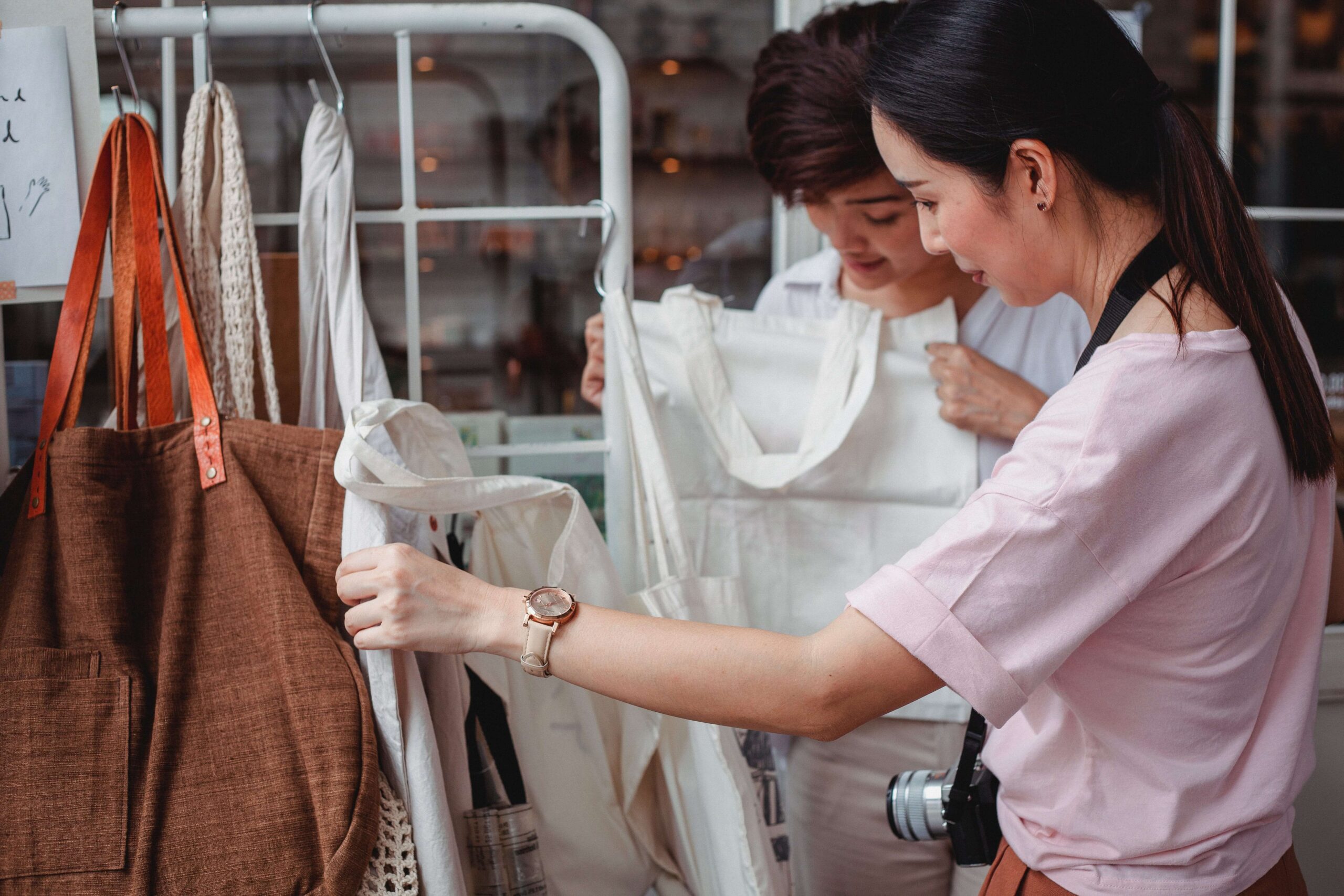During menstruation, hygiene and safety are essential. What if I say traditional pads do more harm than good? They are loaded with harmful chemicals and fragrances and are made of plastic. Your choices during menstruation affect your health and the environment too.
According to the Times of India, exposure to chemicals like dioxin, polymers, VOCs, and fragrances can cause cervical cancer, ovarian cancer, and infertility. Because these chemicals are absorbed through the skin and reach the bloodstream, there is a chance that they will cause ovarian and breast cancer. They will also interfere with female hormones, which can cause painful and irregular menstruation.
It’s time to make a sustainable choice. We will explore the best sanitary pads in India without chemicals so you can have a happy and safe menstruation.

What is the significance of choosing organic sanitary pads?
Every woman deserves to feel comfortable, confident, and convenient during her menstruation. Yet, for a long time, this has been an essential part of a woman’s life, but the potential health risks associated with traditional sanitary pads and their environmental impact have been ignored. These concerns have given rise to eco-consciousness, encouraging individuals and brands to seek alternative options that prioritize both personal health and the planet.
The rise in demand for organic sanitary pads
In this modern age, people are becoming aware of the harmful effects of synthetic materials and chemicals commonly found in traditional sanitary products. The realization that conventional pads lead to plastic waste and that exposure to chemicals, plastic, and fragrances can cause irritation, allergies, rashes, itching, and even cancer has sparked a movement towards eco-friendly alternatives.
Organic pads are made up of cotton and are safe for women and the environment, making them sustainable choices for health and the planet.
As we discuss, we will explore a comprehensive guide for choosing the best organic sanitary pads and define their nature and benefits. I will introduce you to leading brands that have embraced this eco-friendly shift and made safe sanitary pads for women.
It’s time to make eco-friendly choices that are better for you and the planet.
Benefits of using organic sanitary pads
- Reduced exposure to harmful chemicals
Organic pads are free from chlorine, bleach, plastic, and other synthetic chemicals, making them safe to use and reducing exposure to harmful chemicals that can get absorbed into the skin and cause cancer or allergies.
- Better for sensitive skin
Organic pads are made of natural materials that are safe for women who have sensitive skin.
Do not cause allergies or irritation.
- Support for local and sustainable businesses
By buying organic pads, you will support local businesses, support the circular economy, and empower women. By supporting sustainable businesses, you are contributing to sustainable development.
- Biodegradable
It reduces the amount of plastic waste going into landfills, which takes hundreds of years to biodegrade.
What Makes a Sanitary Pad Organic?
The materials used in sanitary pads are organic. Some of the natural materials used in organic sanitary pads are organic cotton, bamboo, corn, banana fibers, and other plant-based fibers. Their absorbent core is without synthetic additives, and the pads are biodegradable and compostable.
The Best sanitary pads in India without chemicals
| NO. | Organic sanitary pads | Material used | Buy |
| 1 | Pee safe | Organic cotton and bamboo pulp | Best Buy |
| 2 | Hi life | 100% Organic cotton | Best Buy |
| 3 | Plush | 100% pure U.S Cotton | Best Buy |
| 4 | Organyc | 100% certified Organic cotton | Best Buy |
| 5 | Saathi | Made up of banana and Bamboo fibers | Best Buy |
| 6 | The women’s company | 100% certified Organic cotton | Best Buy |
| 7 | Anandi | 100% GOTS-certified Organic cotton | Best Buy |
| 8 | Azah | Organic cotton | Best Buy |
| 9 | Avni | 100% natural cotton | Best Buy |
| 10. | Sparkle | Bamboo | Best Buy |
How to Choose the Right Organic Sanitary Pad
Selecting the right organic sanitary pad involves more than just picking a product off the shelf. Factors such as absorbency, comfort, and personal preferences play a crucial role in ensuring a positive period experience. This section provides a comprehensive guide to help you navigate the process of choosing the perfect organic pad for your needs. From understanding your menstrual flow to considering allergies and sensitivities, I walk you through the steps to confidently select pads that provide optimal comfort and protection. Let’s explore the various aspects of pad selection to empower you with the knowledge needed to make an informed and satisfying choice.
- Material Composition: Look for pads made from organic and biodegradable materials like organic cotton, bamboo, or cornstarch-based materials. Avoid synthetic materials like plastic or fragrance.
- Certifications: Check for certifications such as GOTS (Global Organic Textile Standard) or OEKO-TEX Standard 100, which ensure the product meets certain environmental and safety standards.
- Absorbency Levels: Choose pads with varying levels of absorbency to match your flow, such as light, regular, heavy, or overnight.
- Length and Shape: Select a pad length that suits your needs and preferences. Some brands offer various shapes, like wings or contoured designs, for better fit and protection.
- Comfort and Softness: Look for pads that are soft and comfortable against your skin. Some brands offer pads with a cushioned top layer for added comfort.
- Breathability: Choose pads that are breathable to prevent moisture buildup and discomfort.
- Packaging: Consider brands that use eco-friendly and minimal packaging to reduce waste.
- Chlorine, plastic, and fragrance-free: Choose pads that are free from chlorine, bleach, and artificial fragrances, which can irritate.
- Biodegradability and Disposal: Look for pads that are biodegradable and can break down naturally after disposal, reducing environmental impact.
- Ethical Practices: Research the brand’s commitment to ethical and sustainable practices, including fair labor and eco-friendly production.
- User Reviews: Read reviews from other users to get insights into the product’s performance, comfort, and effectiveness.
- Trial Packs: Some brands offer trial packs, allowing you to test the product’s suitability before committing to a larger purchase.
- Price Comparison: Compare the prices of different brands to find a balance between quality and affordability.
- Environmental Impact: Consider the overall impact of the pad’s production, packaging, and disposal on the environment.
- Reusable Options: If you’re open to it, explore reusable options like menstrual cups or cloth pads, which can be more sustainable in the long run.
Top Brands Leading the Organic Sanitary Pad Movement in India/Best sanitary pads in India without chemicals
As the demand for organic sanitary pads continues to grow, several brands have started the movement towards sustainable menstrual hygiene. In this section, we will explore the brands that are showing commitment to using organic materials in their innovative designs that redefine menstrual care and empower women to make conscious choices that benefit their health and the environment.
Let us explore the best brand that makes organic sanitary pads that are safe for you and the planet.
1. Pee Safe is one of the leading brands in women’s hygiene products. Their sanitary pads are biodegradable and made of an FSC-certified bamboo core and organic cotton. These pads are rash-free and contain no chemicals, and the bottom layer is made of plant-based materials. These sanitary pads come in individual disposable pouches.
The regular pack includes 10 pads.
These pads will degrade in 18 to 24 months in a compost facility.
2. Hi Life Have a rash-free period with Hi-Life. These pads comprise 100% GOTS-certified organic cotton sourced from Texas and have 400% more absorbency than normal pads. They are thoughtfully designed to be used overnight with a heavy flow.
Hi Life sanitary pads are biodegradable and eco-friendly and come with disposable bags.
3. Plush sanitary pads are chlorine, paraben, and fragrance-free. These pads are made up of 100% pure organic U.S. cotton on the top layer, which makes you feel soft and comfortable.
Plush sanitary pads are curated according to your needs. It comes with
- Curated: 8 Large + 6 Extra-Large (8L + 6XL)
- All extra-large (12XL)
- Only large (15 L)
4. Organyc® products are made with 100% certified organic cotton. They are naturally absorbent and sustainable. These products have been clinically proven to protect against rashes and irritation.
5. Saathi pads are made of banana fibers that are eco-friendly, sustainable, biodegradable, and locally sourced. These pads are unbleached, fragrance-free, and ultra-thin. Under normal conditions, Saathi pads will biodegrade within 6 months. Pads come in individual plastic-free packaging.
6. The women’s company’s sanitary pads are chlorine- and dioxane-free, made of 100% GOTS-certified organic cotton, and come with individual disposable wraps.
7. Anandi is made of GOTS-certified organic cotton that is free from harmful chemicals, fragrances, and plastic; hence, it is gentle on the skin. Pads are compostable and will biodegrade in 90 to 180 days, making them good for nature.
8. Azah pads are ultra-soft and ultra-thin. The bottom layer is breathable, improving air circulation. Azah pads are made of 100% organic cotton, giving you rash-free periods. Azah pads are four times more absorbent than normal pads. It comes in different sizes and individual disposable bags.
9. Avni pads are ultra-thin and 1.5 times more absorbent than regular pads. Avni pads are made of natural cotton and free from chemicals, fragrance, and plastic, making them an eco-friendly choice that is safe for you and the planet.
The outer back is breathable, has a wider back for leak protection, and comes with individual disposable bags.
10. Sparkle sanitary pads are biodegradable, sustainable, and contain no chemicals, fragrances, or plastic. Sparkle sanitary pads are made of OEKO-TEX and FSC-certified bamboo fiber cellulose, and the outer back is made of biodegradable and home-compostable materials.
Comparing Organic and Conventional Sanitary Pads
The decision between organic and conventional sanitary pads can have a big impact on comfort, health, and sustainability when it comes to menstrual hygiene. In this section, we will analyze these two choices, comparing their materials, absorption, leak protection, and overall performance. You’ll be able to make a decision that suits your preferences and ideals if you know the differences between organic and conventional pads.
| Features | Organic sanitary pads | Synthetic sanitary pads |
| Materials | Organic cotton, bamboo, corn, and banana fibers | Plastic, chlorine, bleach, fragrance, and other synthetic materials |
| Absorbency | More Absorbent. | Less Absorbent |
| Leak protection | Leak proof. | Leak Proof. |
| Comfort and breathability | More comfortable, soft, and breathable. | Made of plastic and is not breathable. |
| Safety | Safe for the skin and the planet. | Not safe for the skin or the planet. |
| Price | The price may be higher | Low price |
| Biodegradable | Compostable and biodegradable. | It takes hundreds of years to biodegrade. |
The Environmental Impact of Organic Sanitary Pads
The decision to use organic sanitary products has a significant impact on the environment in addition to one’s health. This section discusses the advantages of using organic pads on the environment, such as how they help reduce plastic waste and the carbon footprint. Understanding these pads’ eco-friendly features will help you understand the greater benefits that your decisions may have for the environment. Let’s look at how switching to organic can make your period hygiene routines more consistent with your dedication to environmental sustainability.
The Rise of Organic Sanitary Pads
- Environmental concerns and impact of traditional pads
Traditional pads are made of plastics and chemicals that are harmful to the environment and take hundreds of years to biodegrade. Traditional pads are also made of synthetic materials that can harm women’s health.
- Growing awareness of sustainable menstrual products
Menstruation is part of women’s lives, but it should not impact their health or the planet. Traditional pads are loaded with plastic and chemicals that can cause irritation, itching, and rashes. On the other hand, organic pads are safe for health and the environment Hence, people are becoming conscious of their health and the environment, leading them to switch to sustainable menstrual products that are safe for their health and the planet.
Conclusion
It has been a challenge to find the best organic sanitary pads that promote empowerment, sustainability, and well-being. As we come to a close, we pause to think about the impact of informed decisions and their beneficial effects on both our lives and the environment.
Exploring the world of organic sanitary pads has shown us a wealth of options that put the welfare of individuals, their comfort, and the environment first. The switch from conventional to organic pads is an indicator of a wider shift toward eco-friendly alternatives and conscious consumption. Women no longer have to choose between their comfort and the well-being of the world while managing their menstrual cycles.
Using organic sanitary products has advantages that go beyond practicality and into the areas of environmental protection and personal wellness. We wave goodbye to conventional pads that are loaded with plastic and synthetic additives and welcome a new era where organic materials, biodegradability, and sustainability are given priority.
We have given you the information you need to make decisions that are compatible with your priorities and values through our investigation of the top brands, comparison of organic and conventional options, and guide to selecting the ideal pad for your needs.
Take into consideration that every choice you make will help to create a future that is more sustainable as you explore the path ahead. Your intentional choices leave a lasting impression on people, motivating them to adopt sustainable practices.
Accept the power of informed choices and allow the path to a menstrual experience that is healthier, greener, and more in control of progress. You’re not just managing your period when you select the best organic sanitary pads in India; you’re also improving yourself and the planet around you.
Frequently Asked Questions (FAQs)
1. Are organic sanitary pads as absorbent as conventional pads?
Yes, organic sanitary pads are more absorbent than conventional pads because they are made of organic materials such as organic cotton, bamboo fibers, etc. They have more absorbing capacity.
2. Can I use organic pads for heavy flow days?
Yes, organic pads are designed to be used on low- to heavy-flow days.
3. Will organic pads cause allergic reactions?
No, since they are made of organic materials, they are softer and don’t cause allergic reactions.
4. How do I dispose of organic sanitary pads?
Organic pads come with individual disposable bags; put the used pad in the bag and dispose of it in the trash; otherwise, you can compost them.
5. Are organic pads reusable or disposable?
Organic pads are disposable.
6. Do organic pads have an odor?
Organic pads are fragrance-free.
7. Are they available in different sizes?
Organic pads are available in different sizes: S, L, and XL.
-
Eco-friendly Disposable Plates for Guilt-Free Eating.

Plastic waste increasingly burdens our planet. Every day, many disposable items are thrown away; they are not recycled and end … Read more
-
Eco-Friendly Pens in India: A Sustainable Writing Revolution

Have you ever considered the impact of your plastic pens? Every small choice counts. Let us learn about the best … Read more
-
The Best Eco-Friendly Bags in India to Reduce Plastic Waste

The impact of single-use plastic bags on the environment is devastating; we need to take immediate action against plastic pollution. … Read more
Am Jeenath is an engineer in biotech with a diploma in clinical research. I am the mother of a son. And I love helping people live sustainably. I educate people on sustainable living and share sustainability tips, ideas, brands, and DIYs.

